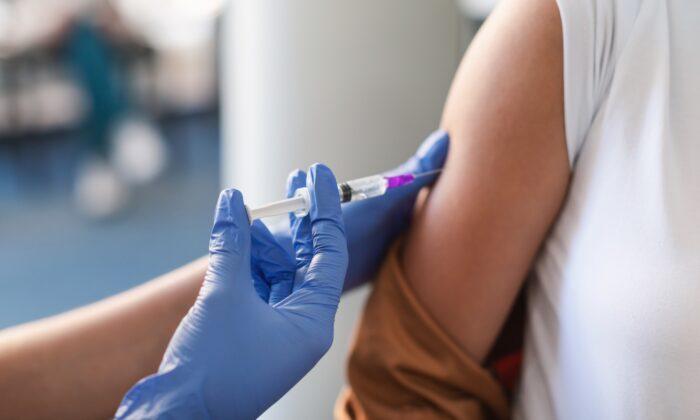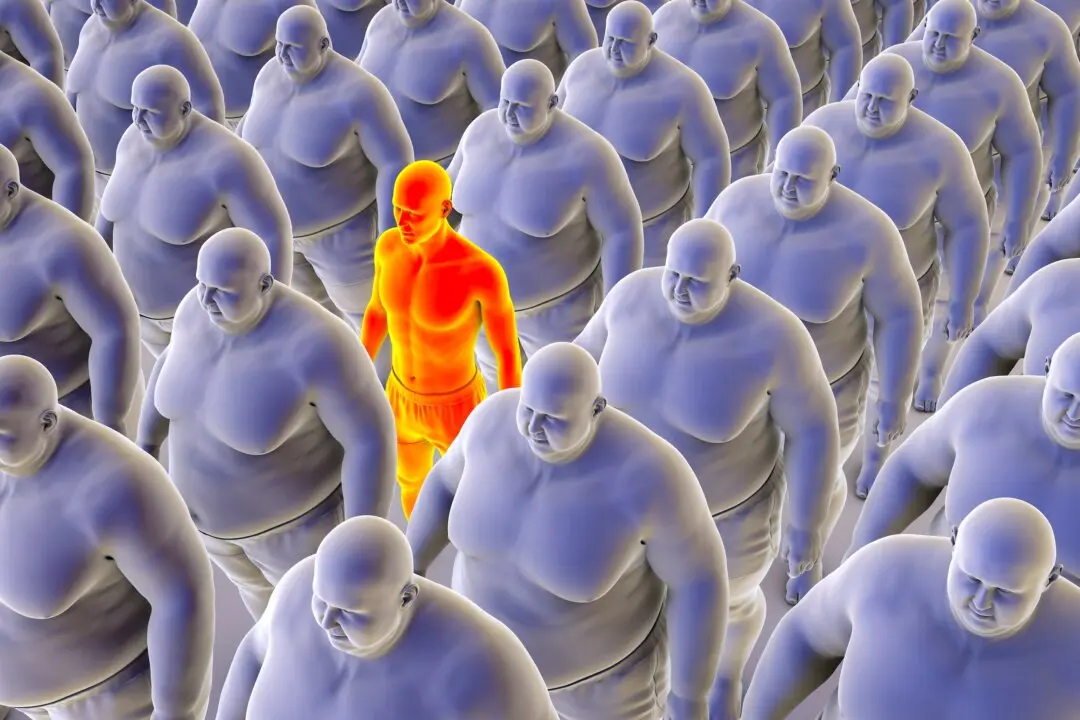They want to put college students’ lives at risk to protect them from a disease that is easily avoided. If this bill is passed, college students under 26 would be forced to receive this shot in this state.
[embed]https://www.bitchute.com/video/89hSHOzs1N01/[/embed]
STORY AT-A-GLANCE
- If passed, California bill AB 659 would require public college students under 26 to receive the human papilloma virus (HPV) vaccine in order to attend college.
- The bill originally proposed mandating the shot for middle schoolers, as a requirement to enter eighth grade—this was amended to a requirement for schools to notify parents that their children “are expected” to get the HPV vaccine before entering eighth grade.
- Most people who are sexually active contract HPV during their lifetime—in more than 90 percent of cases, the HPV infection resolves on its own within two years.
- As of March 31 there were more than 73,302 adverse reactions from HPV vaccines listed in the U.S. Vaccine Adverse Events Reporting System (VAERS), including 623 related deaths, 7,400 hospitalizations, and 3,530 disabling conditions. Due to the low VAERS reporting rates, this may represent only 1 percent of the cases.
- In most cases, only long-term, untreated HPV infections will trigger cervical cancer, and these are typically easily caught and treated with regular Pap smears.
The Truth About HPV–It’s Usually Not Harmful
There are more than 200 types of HPV, and most of them are harmless. Most people who are sexually active contract HPV during their lifetime. In more than 90 percent of cases, the HPV infection resolves on its own within two years.4 What’s more, HPV antibodies are left behind that may prevent against reinfection.However, this is why it’s recommended that women get regular Pap tests, also known as Pap smears, which collect cervical cells and check them for signs of changes caused by HPV. If the test comes back abnormal, treatment is available to remove the abnormal cervical cells.
“Gardasil can only offer women participating in [Pap] screening programs a 10 percent reduction in abnormal Pap tests with a resultant 20 percent decrease in colposcopies and a 42 percent decrease in treatments.”
HPV Vaccine Risks Are Well-Documented
As of March 31, there were more than 73,302 adverse reactions from HPV vaccines listed in the U.S. Vaccine Adverse Events Reporting System (VAERS).11 This includes 623 related deaths, 7,400 hospitalizations and 3,530 disabling conditions. More than half the serious adverse events (56 percent) occurred in youth aged 6 to 17 years. Due to the low VAERS reporting rates, this may represent only 1 percent of the cases.In the United States, there is a federally operated vaccine injury compensation program (VICP) that Congress created under the National Childhood Vaccine Injury Act. The U.S. Court of Federal Claims in Washington, D.C., handles contested vaccine injury and death cases in what has become known as “vaccine court.”
“For example, an HPV vaccine injury claim was filed and awarded by the VICP for Christina Tarsell. Christina was a 21-year-old college student majoring in studio arts at Bard College when she received a series of three Gardasil shots.
“A talented athlete, artist, and honor roll student, she died suddenly and without explanation shortly after the third shot in June 2008. Ten years later, in 2018, the government conceded the case and awarded compensation to her mother for Christina’s vaccine-related death.”16
HPV Vaccine May Lead to Autoimmune Syndrome
The dangers of high immunogenicity were addressed in my 2015 interview with Lucija Tomljenovic, Ph.D., a research scientist at the University of British Columbia. In it, she explains that by triggering an exaggerated inflammatory immune response, vaccine adjuvants end up affecting brain function.“This syndrome is characterized by the appearance of myalgia, myositis, muscle weakness, arthralgia, arthritis, chronic fatigue, sleep disturbances, cognitive impairment, and memory loss …
“The adjuvants added into vaccines can induce a non-specific activation of the immune system with a subsequent expansion of autoreactive (in our case, myelin specific) lymphocytes that may be further accelerated by defective regulatory cells/circuits, in genetically susceptible individuals.
“In the 2016, we retrospectively described a case series including 18 girls (aged 12–24 years) for the evaluation of ”neuropathy with autonomic dysfunction” immediately after HPV vaccine …
“All girls complained of long-lasting and invalidating somatoform symptoms of the recently described ASIA syndrome (including asthenia, headache, cognitive dysfunctions, myalgia, sinus tachycardia, and skin rashes) that have developed 1–5 days, 5–15 days, and 15–20 days after the last dose vaccination.
“The HPV vaccine formula contains aluminum … but also high polysorbate 80 (50 mcg) concentration that might also induce a greater meningeal permeability leading to a facilitated entrance of many substances to the CNS [central nervous system]. Based upon these observations, it might be speculated that HPV vaccine could induce some abnormal activation of immune competent cells in the CNS, such as the glia.”
Have Cervical Cancer Rates Decreased–or Increased?
The HPV vaccine is misleadingly referred to as a tool to prevent cancer. Even California’s proposed bill AB659 is known as the Cancer Prevention Act.19 But does the vaccine actually reduce cancer cases?“Over the last 18 years [2001 through 2018], 29,715 women were diagnosed with distant stage cervical carcinoma … When examining the trends over time, there has been an annual increase in distant stage cervical cancer at a rate of 1.3 percent per year. The largest increase is seen in cervical adenocarcinoma with an average annual percent change of 2.9 percent.”There’s even evidence suggesting HPV vaccination makes women more susceptible than their nonvaccinated peers to HPV genotypes not covered by the vaccine.24 Due to a phenomenon known as “clinical unmasking,” it appears that women who received the HPV vaccine may be more vulnerable to infection by other cancer-causing HPV strains.
“One was the potential for Gardasil™ to enhance disease among a subgroup of subjects who had evidence of persistent infection with vaccine-relevant HPV types at baseline.
“The other concern was the observations of CIN 2/3 [abnormal precancerous cervical cells] or worse cases due to HPV types not contained in the vaccine. These cases of disease due to other HPV types have the potential to counter the efficacy results of Gardasil™ for the HPV types contained in the vaccine.”
What’s the Best Way to Avoid Cervical Cancer?
Mandates for the HPV vaccine have no place in public health. There are multiple ways to reduce your risk of HPV infection, as well as cervical cancer, without risking adverse health effects from the vaccine. To avoid contracting HPV, practice safe sex, including using condoms during sexual activity. This can reduce the risk of HPV infection by 70 percent,28 which is far more effective than the HPV vaccine.Further, women should get regular Pap smears once sexually active, and get treatment if you test positive for HPV infection or abnormal cervical cells. Remember, it’s the long-term, untreated infections that usually trigger cancer, and these are typically easily caught and treated with regular Pap smears.
◇ References:
- 1 Desert Sun April 9, 2023
- 2, 19 California Legislative Information, AB-659 Cancer Prevention Act
- 3, 8, 11, 12 NVIC, Disease & Vaccine Information, HPV Disease and Vaccine Information, HPV Quick Facts, HPV
- 4 NVIC, HPV & HPV Vaccine Quick Facts
- 5, 6 J Vaccines Vaccin. 2010 Nov 23; 1(107): 1000107., Intro
- 7 National Cancer Institute, Cervical Cancer Screening
- 9 U.S. CDC, HPV Vaccination Recommendations
- 10 J Vaccines Vaccin. 2010 Nov 23; 1(107): 1000107
- 13 NVIC.org, HPV Vaccine and Disease Quick Facts
- 14 Collective Evolution Jan. 8, 2018
- 15 NVIC, Can HPV vaccine cause injury and death?
- 16 Court Listener, Tarsell vs. Secretary of Health and Human Services March 26, 2018
- 17 Tokyo Times 2014
- 18 EPMA J. 2017 Sep; 8(3): 295–311., HPV vaccine and ASIA syndrome
- 20 Cancer Epidemiol Biomarkers Prev. 2021 Jan; 30(1): 30–37
- 21 Obstet Gynecol. 2012 Nov; 120(5): 1117–1123
- 22 Medscape Sept. 7, 2022
- 23 International Journal of Gynecological Cancer Dec. 1, 2022; 32(9)
- 24 Medscape June 21, 2022
- 25 The Lancet Oncology June 13, 2022
- 26, 27 FDA.gov Gardasil HPV Quadrivalent Vaccine May 18, 2006 VRBPAC Meeting (PDF, page 13, “Concerns Regarding Primary Endpoint Analyses Among Subgroups”)
- 28 N Engl J Med 2006; 354:2645-2654, Discussion






